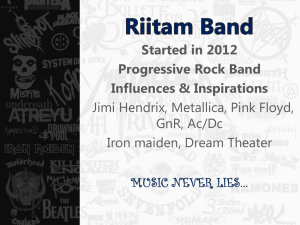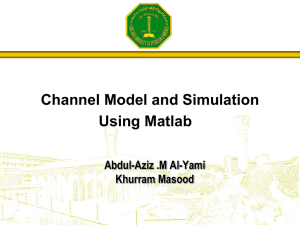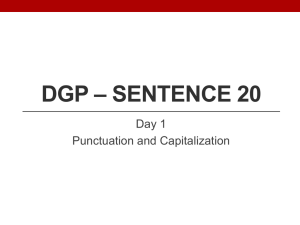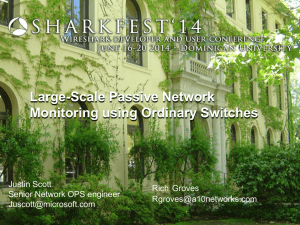Lab 8
advertisement
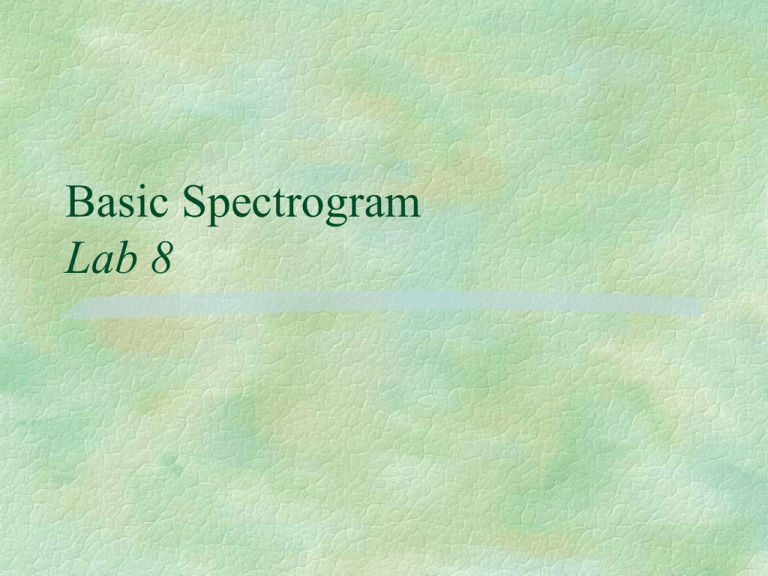
Basic Spectrogram Lab 8 Spectrograms Spectrograph: Produces visible patterns of acoustic energy called spectrograms Spectrographic Analysis: Acoustic signal changes rapidly & continuously Need a dynamic analysis revealing spectral features Short term running spectrum Spectrographic Analysis Time, Frequency & intensity Time (horizontal axis): Phonetic elements will be from left to right Frequency (Vertical axis): Increasing in upward direction Intensity represented by a gray scale or as variations in darkness Dimensions of Spectrograms A. Burst of noise B. Vowel with 4 formants Time C. Noise with high frequency energy Source/Filter Resonator & Source Energy Filter = Vocal tract • Energy passed in a frequency selective manner • Production of different vowels changes the filter shape Source = Harmonic spectrum of voicing • Fundamental frequency & its harmonics • Source spectrum is the acoustic energy activating the formants Source-filter theory of vowel production: The energy form the source (vibrating vocal folds) is modified by the resonance characteristics of the filter (vocal tract) Formants- Filter Are formed through resonation of sound in the vocal tract (filter function) Can only see through a wide band spectrogram F2 F2 F1 Harmonics- Source Harmonics (Spectrum) Harmonics(Spectrogram) Source-Filter Theory Source-Filter Wide Band vs. Narrow Band Wide Band: analyzing filter wide, 300400 Hz Good to show formants because they have a wide spread of acoustic energy Narrow Band: analyzing filter is of higher resolution, 100 Hz Good to show the harmonics of source spectrum Bandwidth Narrow Bandwidth (Harmonics) Wide Bandwidth (Formants) Continuous Spectrum Bandwidth Vowel: Wide Band vs. Narrow Band Wide Band Spectrogram Fricative noise: Above 3 or 4 kHz Diphthong: Horizontal bands of energy Digital Signal Processing Basic objective of digital signal processing: Convert the analog acoustic signal (Panel A) to a digital form (series of #’s) How do we get a waveform into a digital computer? • Analog-Digital conversion (A-D): results in samples of time and amplitude Correct sampling rate is important to reconstruct the wave form • Sampling rate must be 2x the bandwidth of analysis: Nyquist Frequency – Ex. Sample speech with a bandwidth of 5000 Hz, than the sampling rate should be 10,000 Hz Analog-Digital Conversion b. Time sampling intervals Laboratory Part I: Recording the sample- Sampling rate Set sampling rate for shortest duration possible Sustain /a/: **open 3 views to print all samples on 1 screen • Sample at 20,000 samples/sec; look at 5-6 cycles • Sample at 5,000 samples/sec; look at 5-6 cycles • Sample at 2,500 samples/sec; look at 5-6 cycles What happens as sampling rate drops Narrow band filter each sample (print each) Laboratory Part II: Filter bandwidth Record “I am tall” • Wide band and narrow band the statement – Find the following characteristics on one or both of the spectrograms: » Harmonic lines » Formant bands » Vertical striations » Acoustic indication of release of air pressure for /t/ – Which has better frequency resolution? Time resolution? Which can you determine formant bands? Laboratory Part II: Cont. Make wide and narrow band spectrograms of the following, stressing the underlined word: • • • • “I am tall” “I am tall” “I am tall” “I am tall?” Which spectrograms show the intonation contour? Mark the contour on one of your printouts Laboratory Part III: Changing the Filter Say /i:u:i/ without changing intonation • Prepare 2 spectrograms of this utterance – 1st- 2x’s your fundamental frequency – 2nd- no more than half your fundamental • Answer questions: – Label each vowel on each spectrogram – Harmonics – Formants



